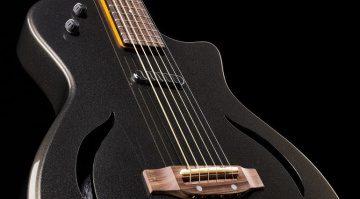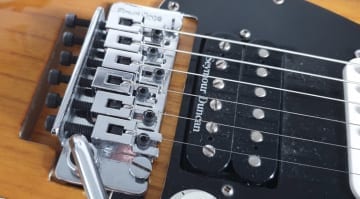Acoustic Guitar Strings: How to Change – Restringing Made Easy
Acoustic Guitar Strings and how to change them: If you want to maintain your guitar’s sound and playability, you should change the strings regularly. For beginners, this task can often seem a bit daunting. In this tutorial, we will show you how to change the strings on nylon-string and steel-string acoustic guitars.
All About Restringing of Acoustic Guitar Strings
Acoustic Guitar Strings – Restringing Made Easy
The most important thing you need is obviously a new set of acoustic guitar strings. And if you don’t have them yet, we recommend that you also get these tools, as they make changing the acoustic guitar strings a lot easier:
- Side cutters
- String winder
Here are some examples for useful tools*:

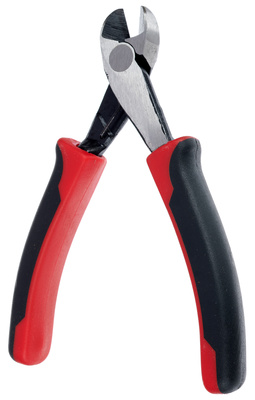

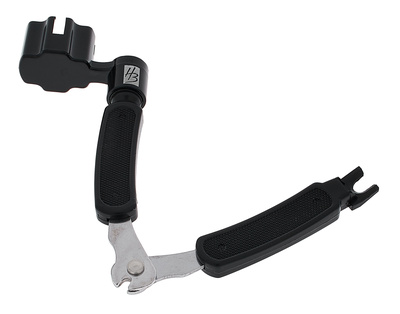

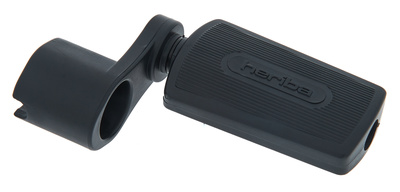

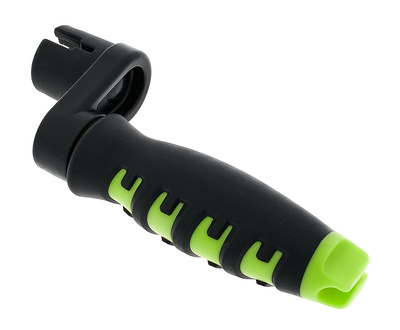

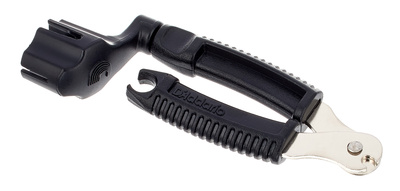
If you’re not sure which set of acoustic guitar strings is best, you can’t go wrong with a medium tension set on a nylon-string guitar. For steel-string acoustic guitars, .012-.053 gauge strings are the standard.
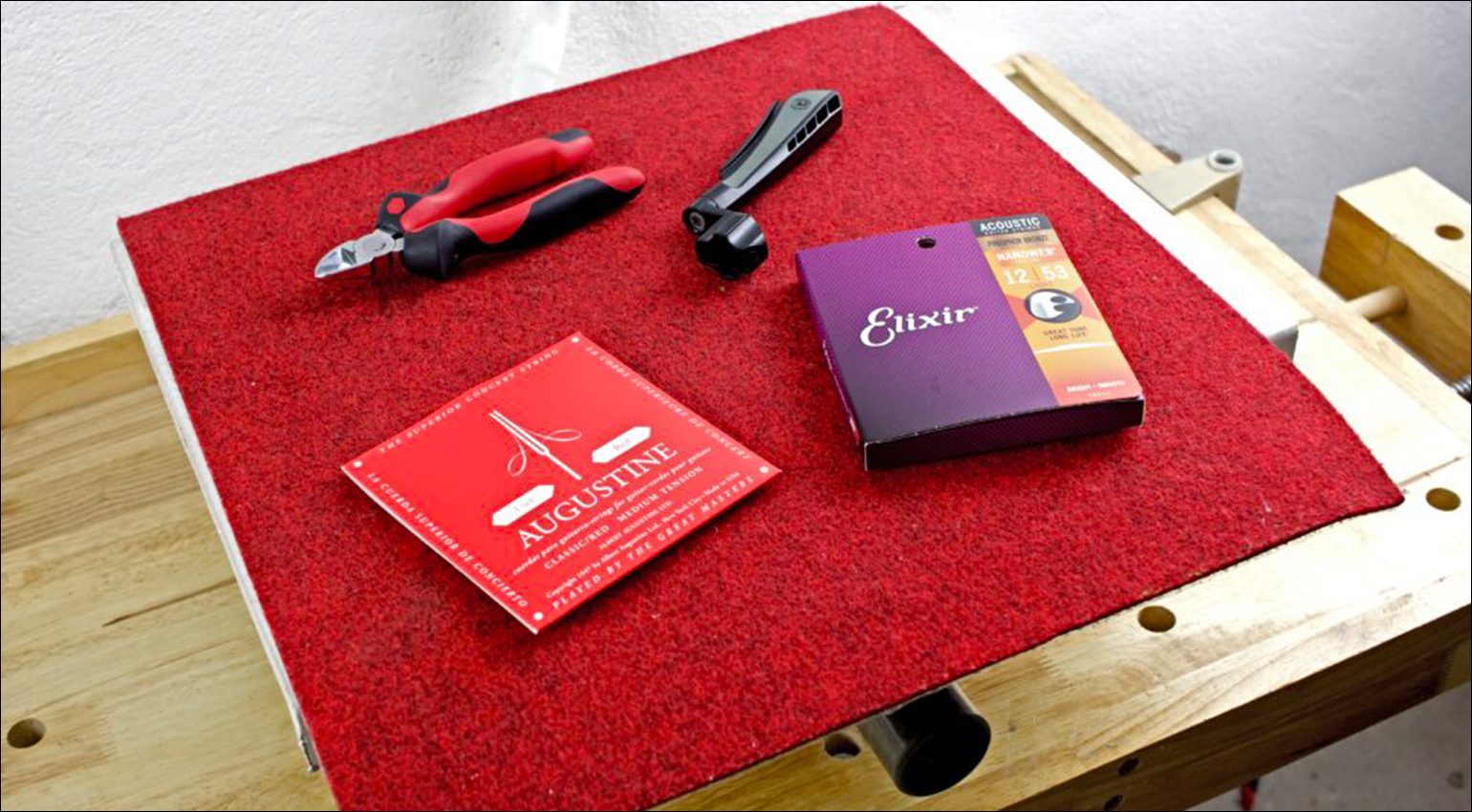
How to change bass strings on a nylon-string guitar
First, let’s look at changing the nylon strings of a classical guitar. Before removing the old acoustic guitar strings, check whether the bridge has one or two holes per string (also called a six-hole or twelve-hole bridge).
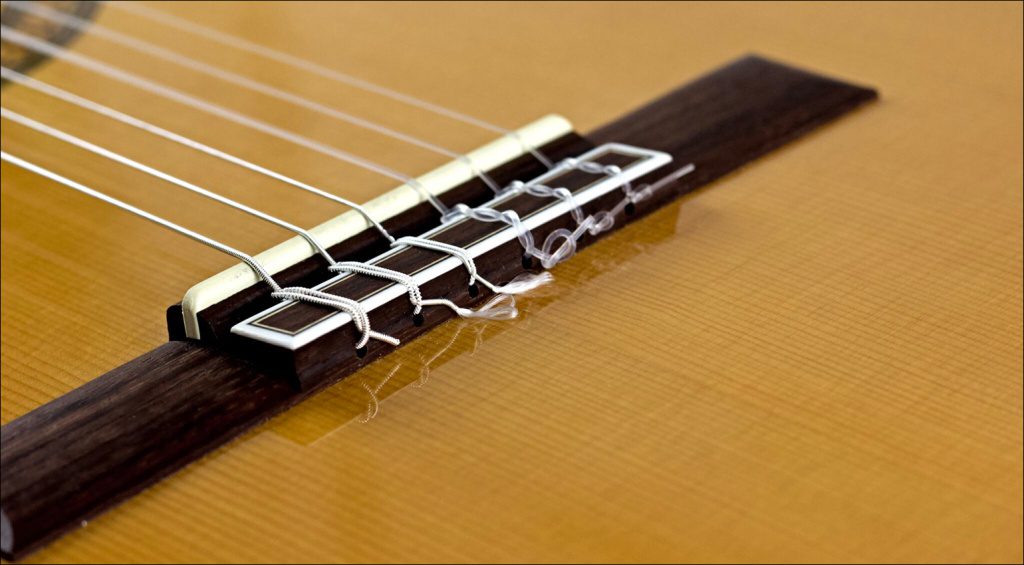
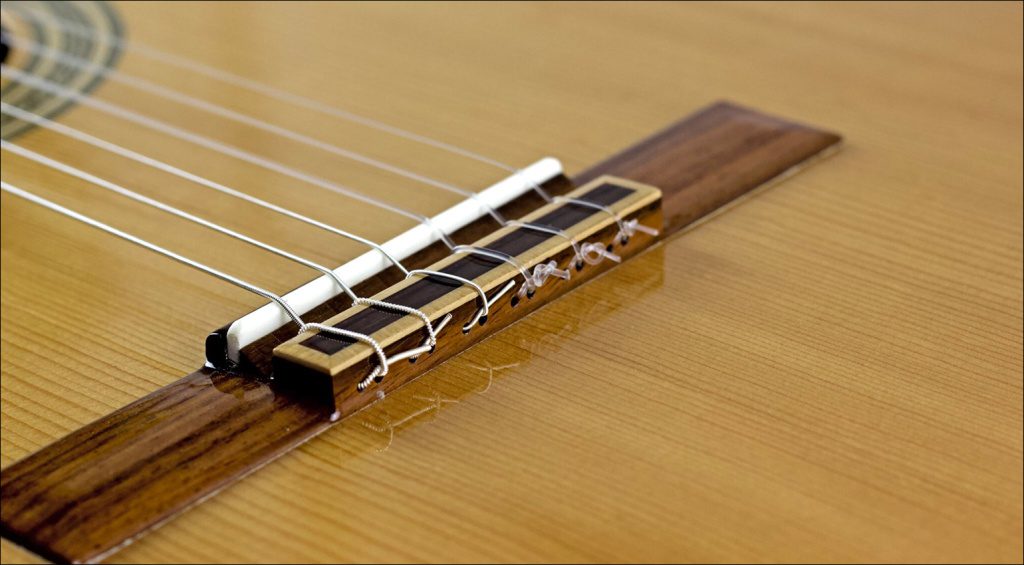
Next, loosen the strings, cut them above the sound hole, and remove them.
The process for putting on the new acoustic guitar strings is a bit different for the wound bass strings and the high nylon strings. Let’s begin with the low E string. If you’re dealing with a single-hole bridge, pass the string through the bridge from the front so that the end sticks out about 10 cm / 4 inches on the other side. Then take the short end and pass it under the string to form a loop. Lastly, tighten the string end at the back of the bridge by passing it through the loop, holding it in place, and pulling the string tight.
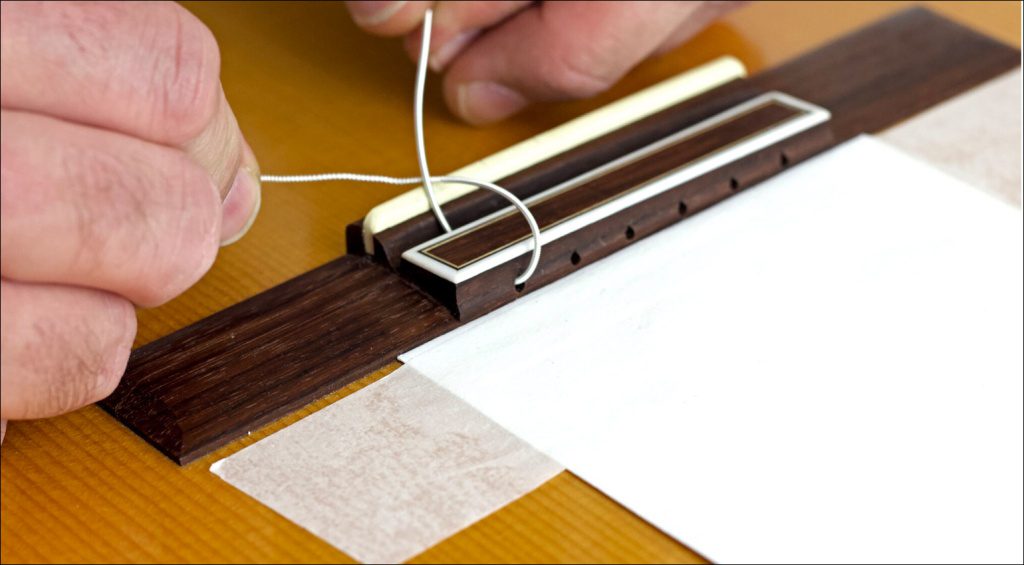
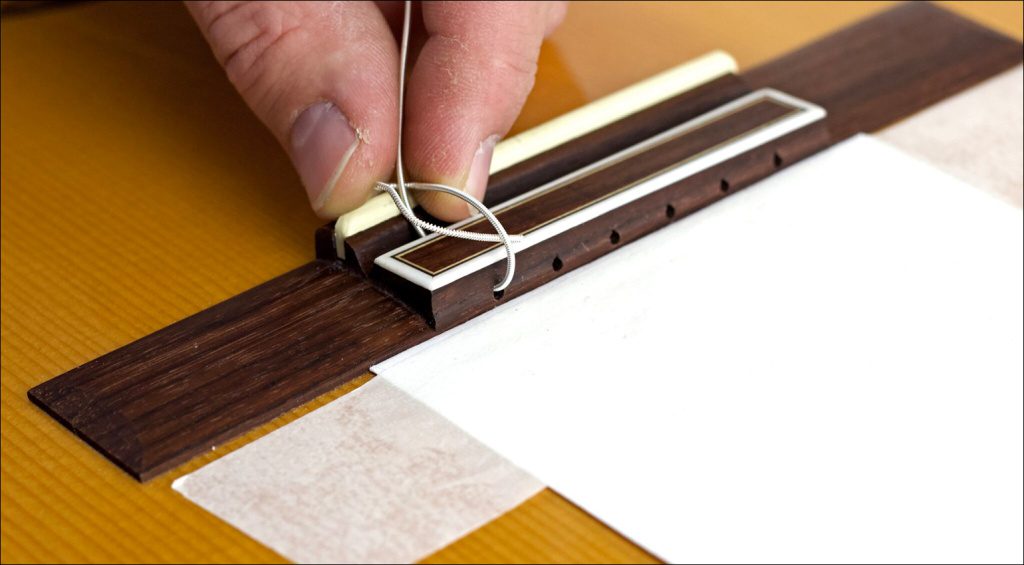
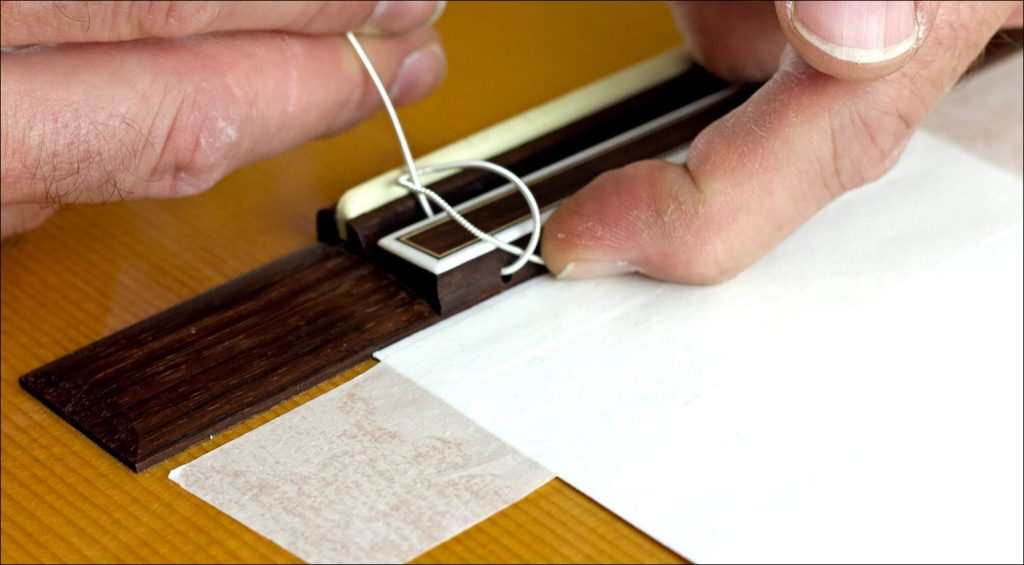
If you have a double-hole bridge, the string is also passed from the front about 10 cm / inches through the first hole. After that, loop the end of the string around, pass it through the second hole, and then tighten it by passing it through the loop and pulling the string tight.
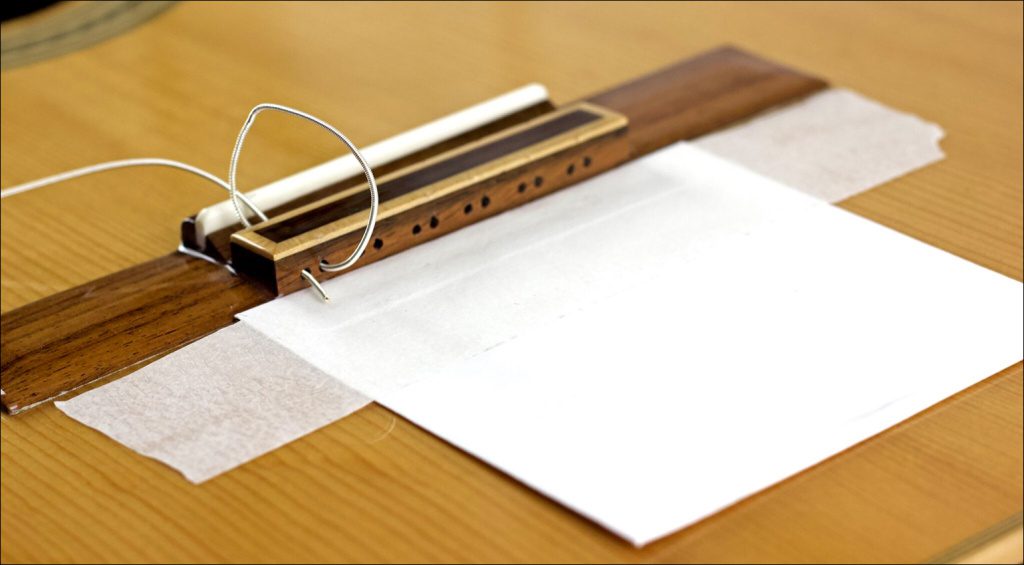
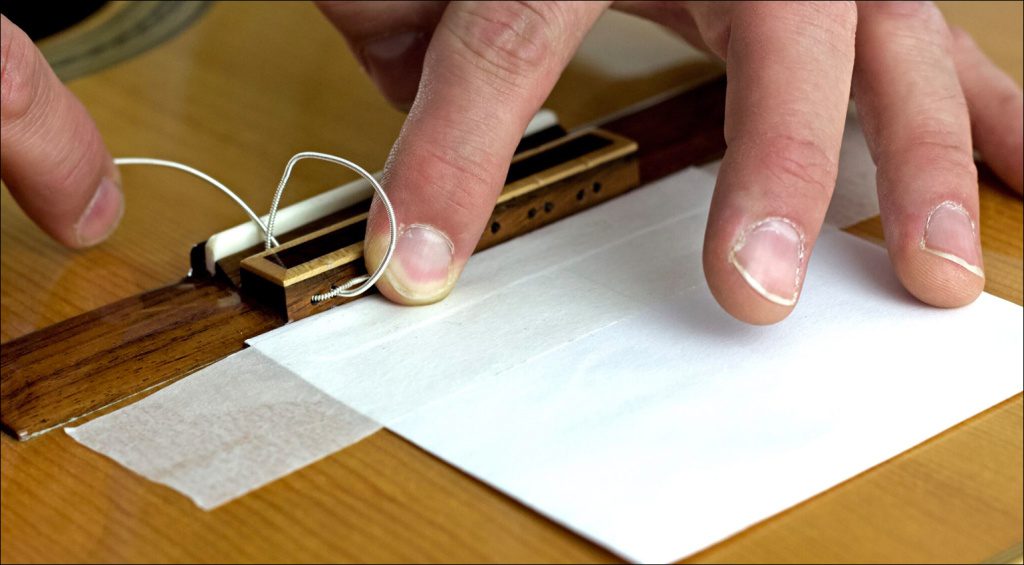
At the other end, begin by adjusting the tuning keys so their holes are in a vertical orientation. Then pass the string through the hole from above. The end of the string is then guided around the front of the axle and tucked underneath the string. Now we can already begin to tighten the string using the tuning peg. You may need to hold the string in place with your index finger for the first winding.
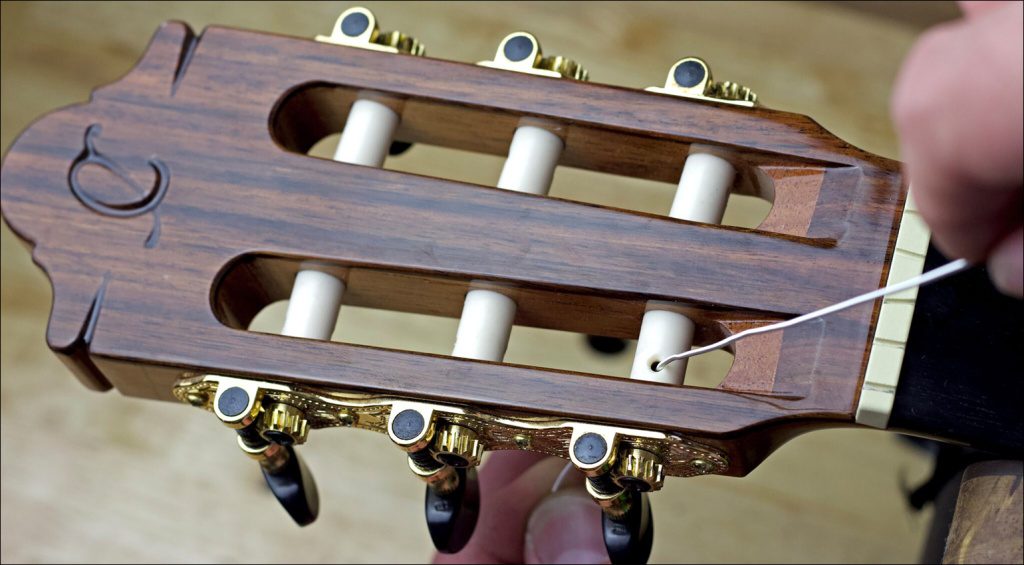
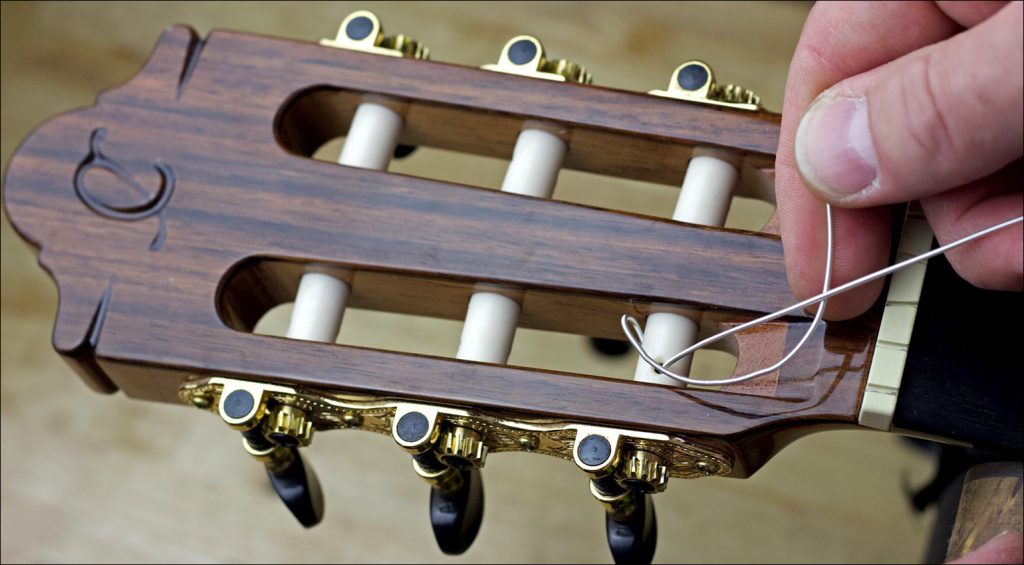
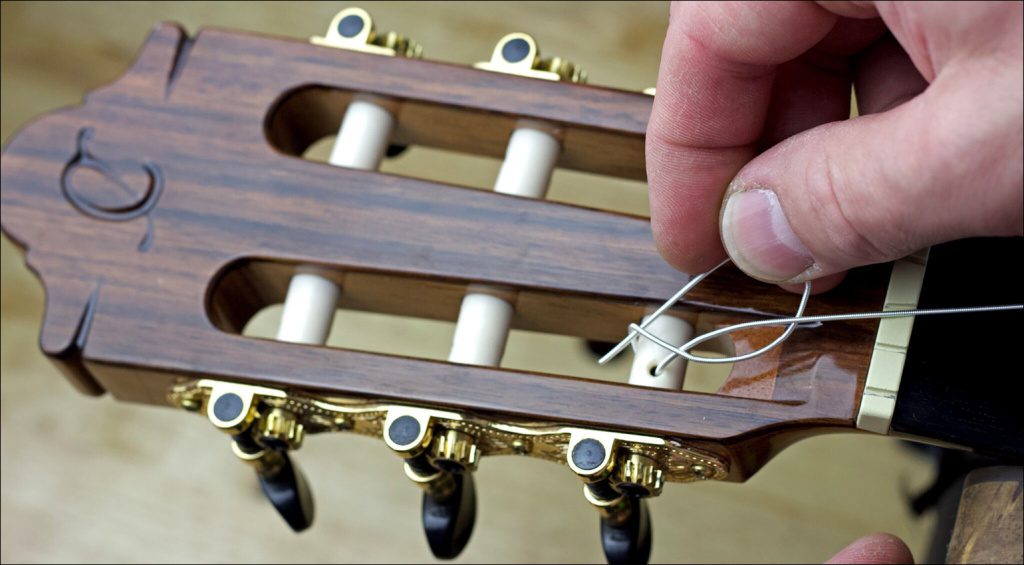
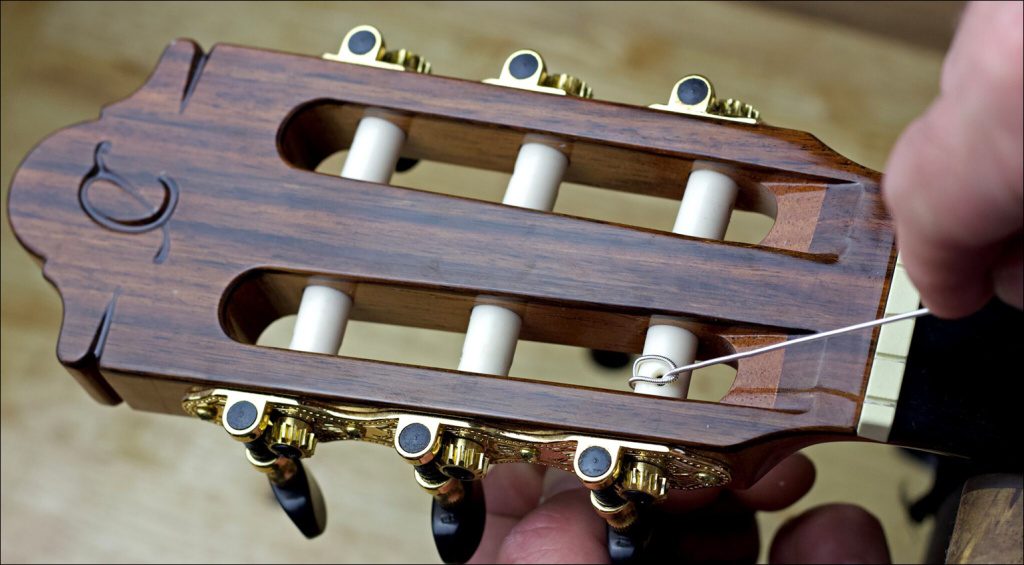
How to change treble strings on a nylon-string acoustic guitar
For the unwound treble strings, pass the string through the bridge from the front until it protrudes about 10 cm / 4 inches out the back, and tie a knot in the short end. Now pass the tail under the string from the front and wrap it twice around the loop. Finally, hold the knot in place on the back of the bridge and tighten the string.
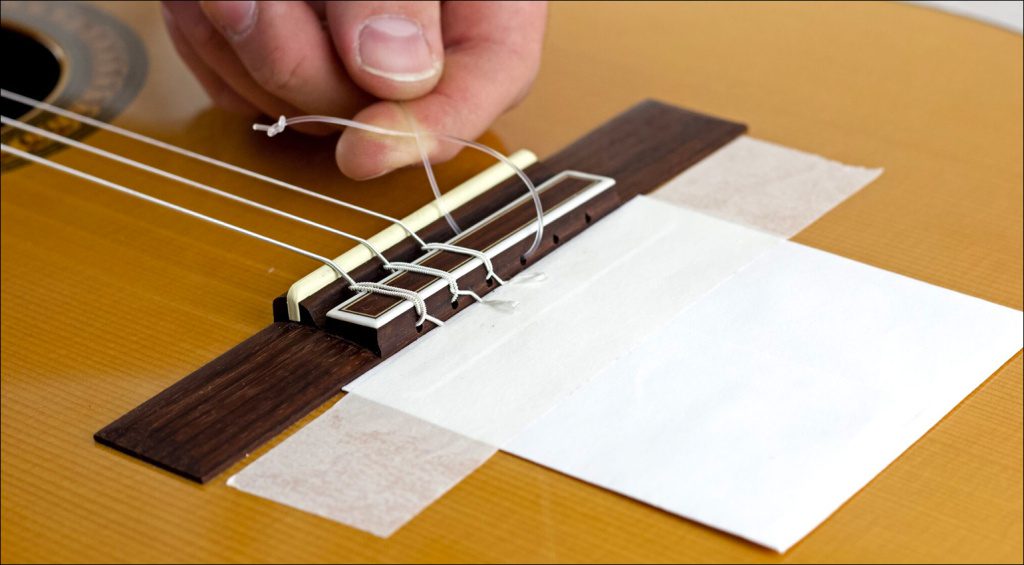
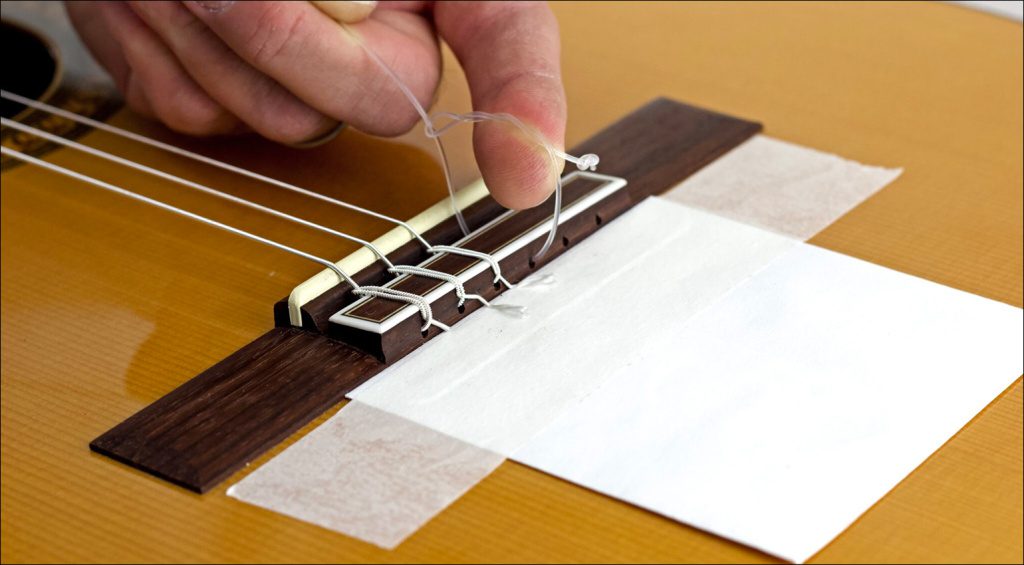
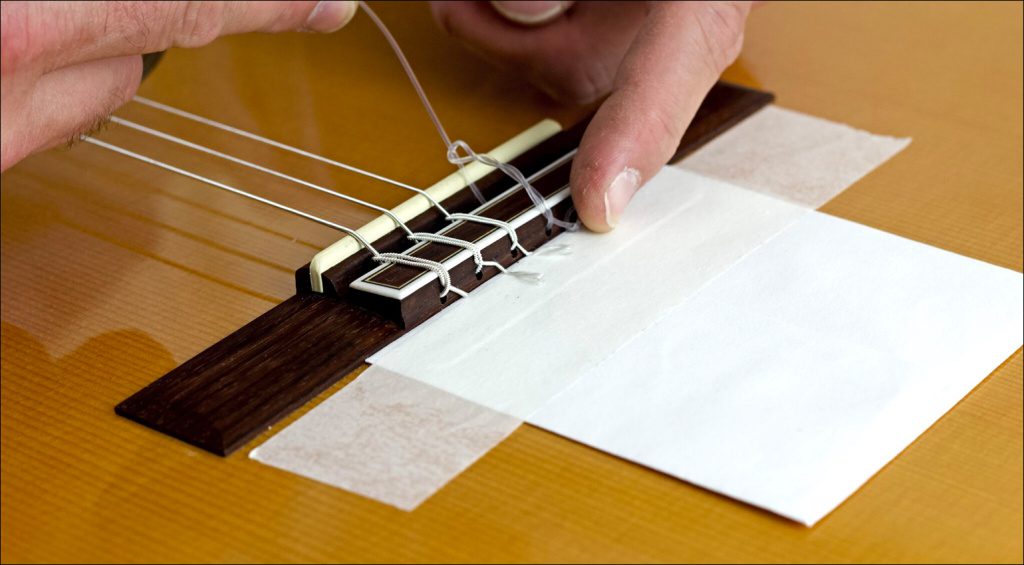
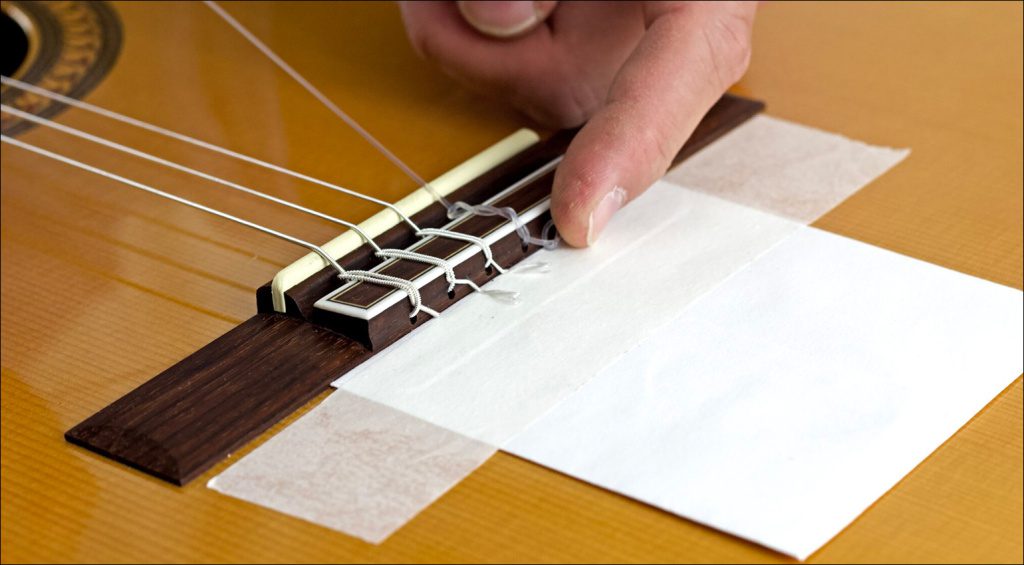
If your bridge has double holes, the string is passed through both holes of the bridge from the front. After that, tie a small knot at the end of the string, pass it through the resulting loop, and tighten the string.
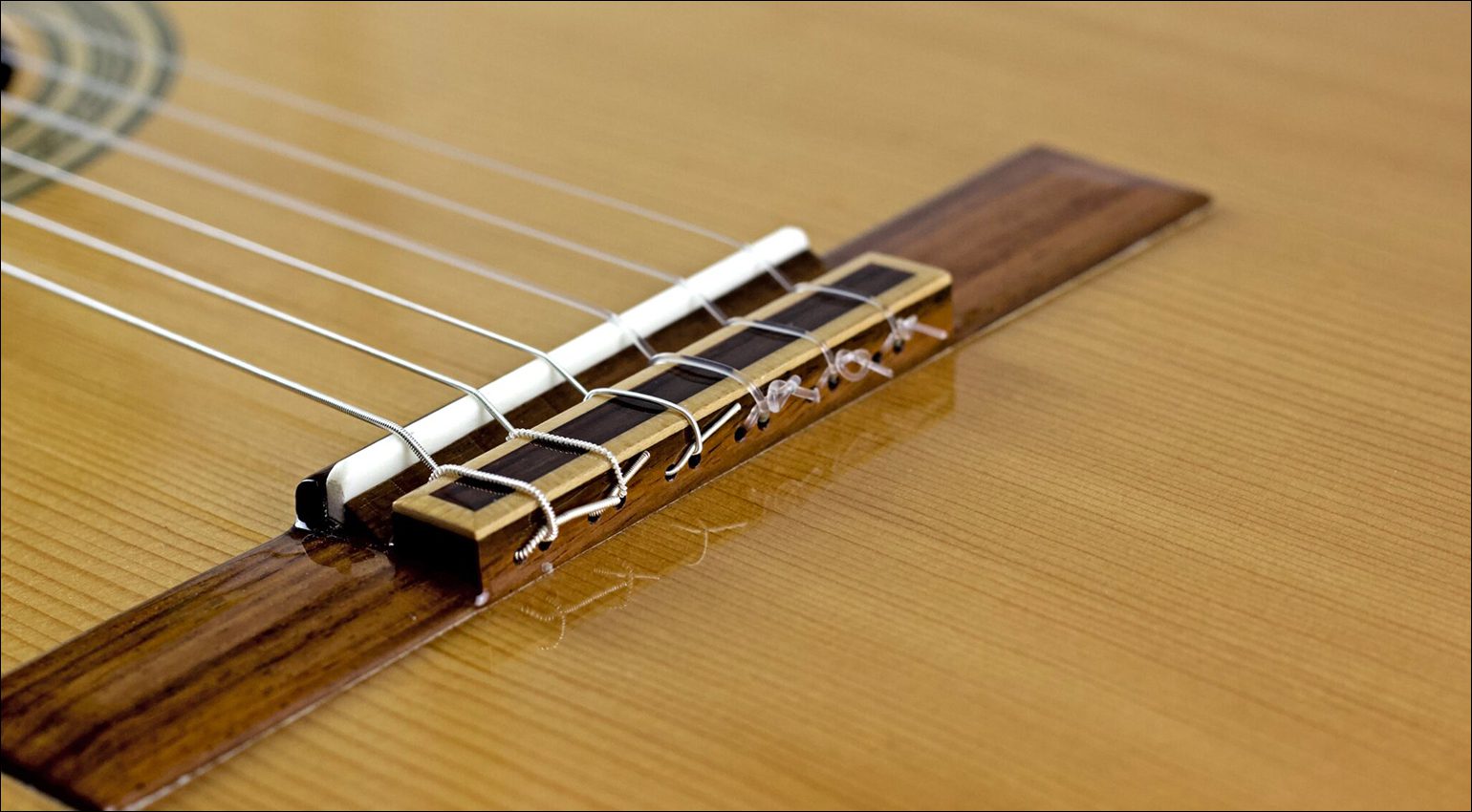
At the other end, the process for winding the treble strings on the tuning machines is exactly the same as for the bass strings.
The last step is to stretch the strings a bit. However, you’ll probably find that you have to retune the strings of a nylon-string guitar regularly over the first few days.
How to change the acoustic guitar strings on a steel-string acoustic guitar
Now, let’s move on to steel-string acoustics. First, remove the old strings by loosening the tension and then cutting the strings in front of the bridge.
Bridge pins that refuse to come out are best removed by reaching through the sound hole and carefully pushing them up from below, preferably with the help of a hard object. Alternatively, many string cranks have a notch that serves exactly this purpose and helps to grab the bridge pins at their head.
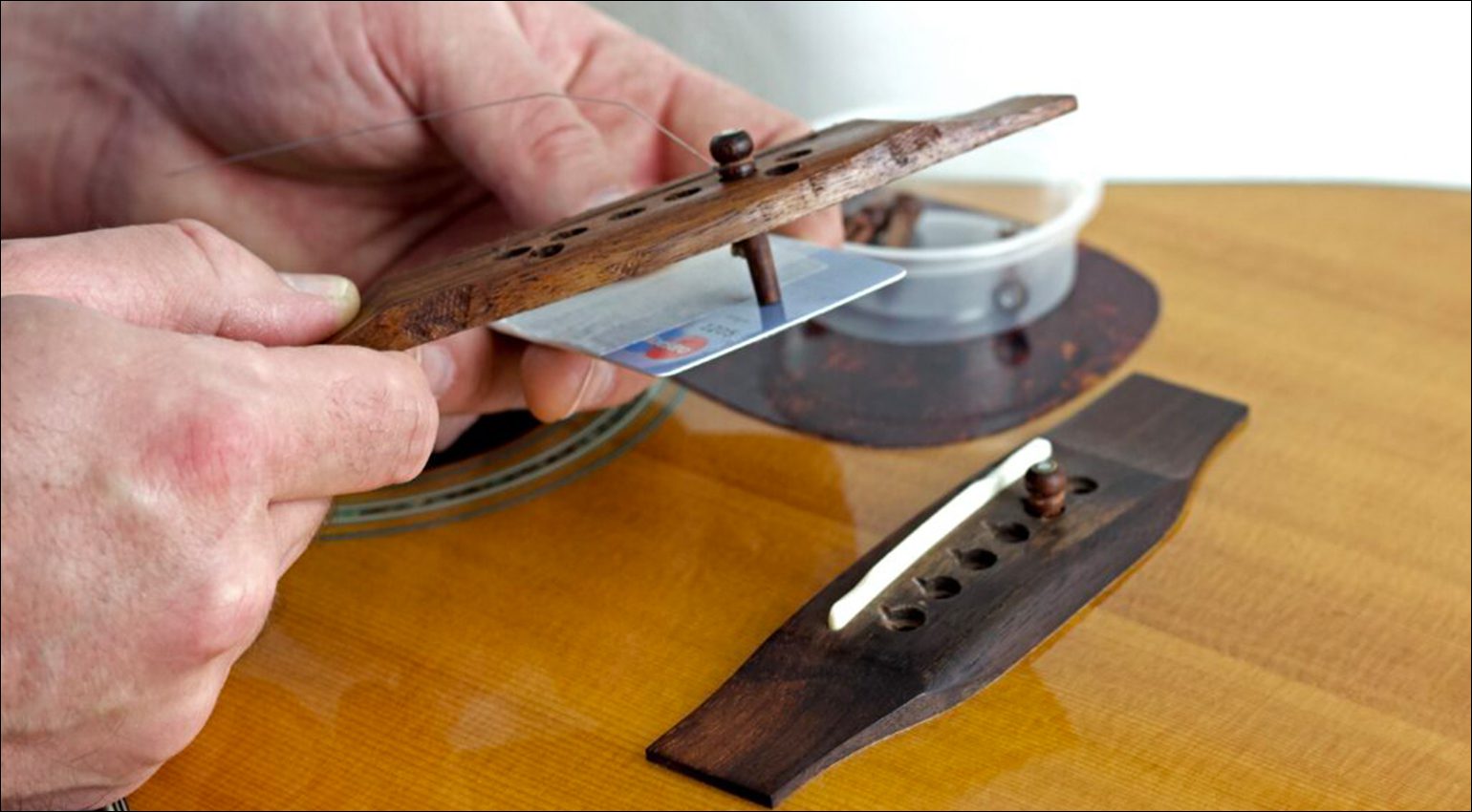
Let’s begin with the low E string again. In order to ensure a secure fit, it helps to bend the end of the string with the ball end a little. Then, insert the string into the hole and secure it with the bridge pin.
At the head plate, begin by aligning the hole of the tuning post with the direction of the string, and pass the string through the hole as far as it’ll go. Then trim the string approximately at the next tuning post. After that, guide the string back until only a short tail protrudes through the hole, and bend it upwards.
Now you can tighten the string. Be sure to guide the string by pulling it tight while you wind it up using the tuning peg. Also, make sure that the windings are formed below the tensioned string by pressing the string down in front of the machine head.
Finally, stretch the strings. Since the strings can sometimes slip a little, it’s best to give the bridge pin some support.
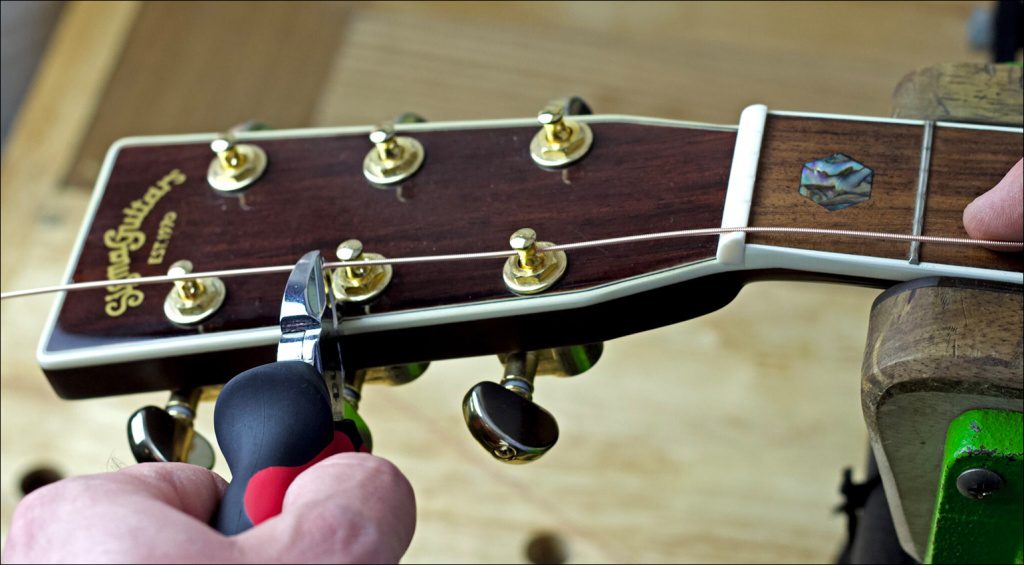
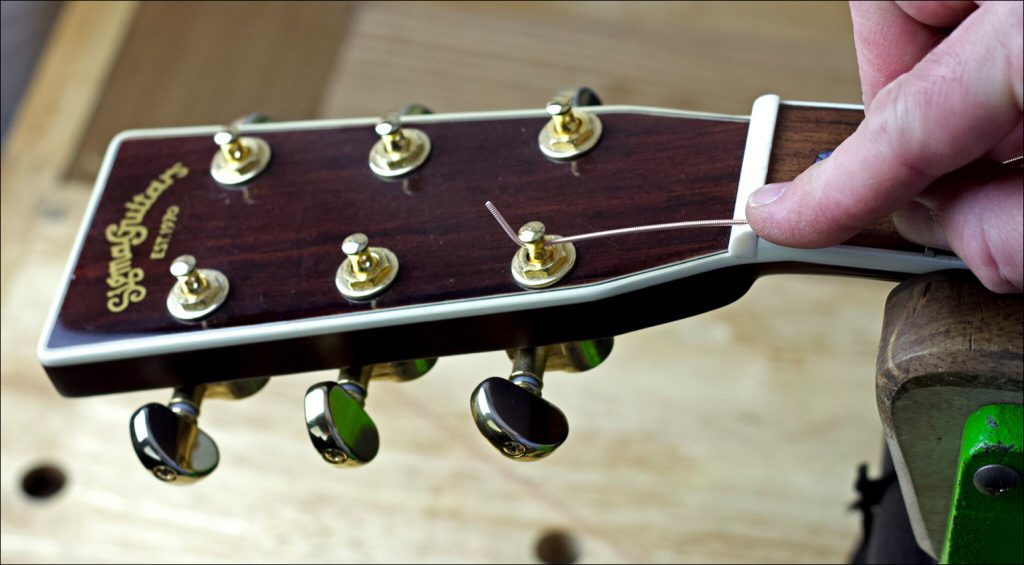
More Acoustic Guitar Tips
- Best Acoustic Guitar for Beginners: Nylon or Steel Strings?
- How a Capo Changes Key: The Songwriter’s Secret Weapon
Note: This article was originally published in German on bonedo.de.
Note: This post contains affiliate links and/or widgets. When you buy a product via our affiliate partner, we receive a small commission that helps support what we do. Don’t worry, you pay the same price. Thanks for your support!



 3,6 / 5,0 |
3,6 / 5,0 | 






